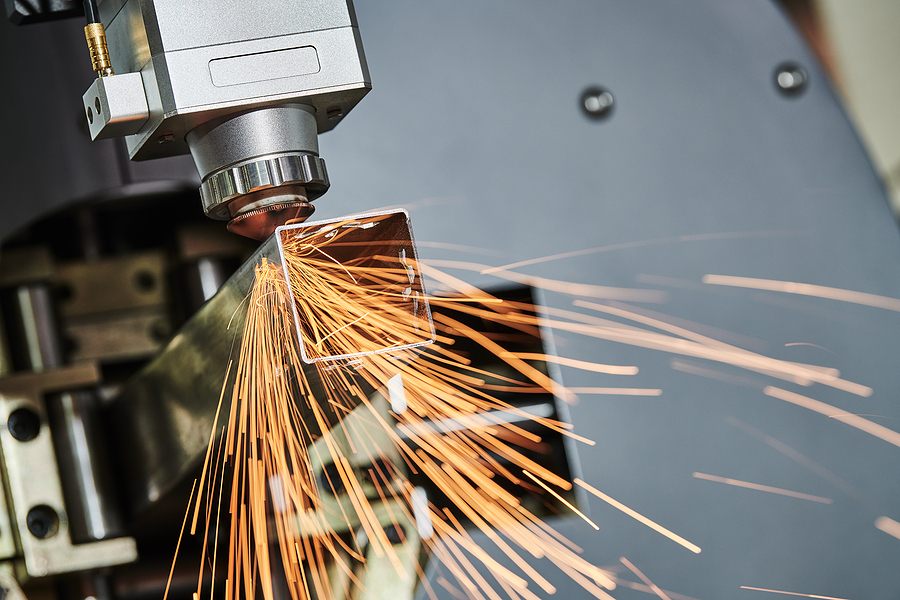Tubular steel products are popular with architects, builders and designers alike – and despite prices of steel tripling in a post-pandemic world, demand is skyrocketing.
Just like regular steel, tubular steel is more elastic than rubber; it’s 1000 times stronger than iron and it’s one of the world’s most recyclable materials.
It’s also decorative, practical and a prized material for architects, builders and high-end furniture designers alike.
“Tubular steel is a champion of modern architecture, a very versatile material,” says celebrated Australian architect Charles Wright, whose striking steel channel repertoire includes the Far North Queensland Trinity Anglican School Tasmania Science Building – variously open to visual interpretation as a slinky or a “helix” (a corkscrew-like spiral staircase).
But it doesn’t just look pretty.
As with all good architecture, form must follow function, and the steel channels act as a practical sun-shading device, whilst casting alternating scintillas of light and shadow.
The 2-storey masterpiece is also a prototype of sustainability for education buildings in tropical latitude, where the ability to withstand cyclones and tropical flooding is paramount.
“Tubular steel and rolled steel products aesthetically are very appealing too, and more refined than say an open flange,” says Wright.
“You can also create great spans with minimal amount of material, rather than spanning something in say timber.
“The other wonderful thing about steel is that you can use it in myriad ways and it’s one of the most recyclable materials in the world which makes it a great sustainable choice.”
David Brandi, Chairman of Australian Pipe & Tube, Victoria’s trusted independent provider of pipe and steel products, says that despite price volatility of the market in recent times; (US steel prices have tripled in the first half of 2021) that demand for tubular steel products has shown no sign of abating.
“The steel industry generally has seen a great deal of change in recent years due to many factors including a glut of steel from China initially; followed in recent times by a global supply shortage.
“On top of that, COVID-19 has seen the freight costs for steel and many other products increase by more than 500% on the seasonal average due to tight vessel supply caused by pandemic logistics issues and COVID-19 outbreaks at export hubs.”
But he says despite all this volatility, steel demand in Australia has increased exponentially, resulting in AP&T’s biggest year yet.
“People need steel. What we do with tube steel isn’t rocket science. We take a flat piece of steel and produce high quality tubes, mostly for construction and engineering where it can provide excellent mechanical characteristics and geometric tolerances. It also produces very pleasing aesthetic results in construction.
“We also specialise in tubing for farming equipment, trailers and signage which is strong and durable and stands up season after season.
“Across the board, steel is facing big demand globally and locally. Even before COVID-19 the local steel industry in Australia has only ever been able to service about 75% of the country’s demand.”
Brandi says AP&T is a smaller, boutique player in the tubular industry.
He believes AP&Ts OTO tube mill from Italy, which offers the most advanced tubular manufacturing technology in Australia, coupled with “agility ability” to get Victorian distributors tubular products quickly – has seen year-on-year production increase by 25% in 2020-2021.
“There’s no doubt that demand generally for steel and steel tube products has grown rapidly in the past two years and will continue to grow.”
From a design perspective, tubular products are also back in vogue – thanks to the rise and rise of retro revival.
The tubular Wassily Chair, designed by Marcel Breuer in 1925, winsomely inspired by bicycle frames, is today regarded as one of the most iconic chairs of all time.
Charlotte Perriand, a French furniture maker famous for her Avant Garde tubular tilted chaise lounge, also inspired this new wave of design; as did the sunken living rooms of the 1950s which often featured tubular chairs and light-weight day beds.
Interior Architect Conrad Lowry, Project Design Leader at Rothelowman Architecture, Interiors and Urban Design, says the sleek functionality of tubular steel has transcended all previous conceptions of furniture design.
“Tubular steel’s earliest manifestations were in furniture that for the first time could cantilever and appeared slender and elegant, in a time when most furniture was heavy and ornate at best but cumbersome and inelegant at worst.
“With the advent of tubular steel, arrays of columns suddenly appeared to support a mass that seemed to float over the columns.”
He said in 2021, a slew of new designers were breathing fresh life into tubular furniture design using lush fabrics, metallic accents and dramatic use of colour.
“The lack of corners in tubular steel imbue a feathered, delicate quality to the structural elements that no other material can simulate.
He says careful detailing and selection of finish (buildings) and bold colours and opulent fabrics (furniture) all complement the structural element the steel forms – and this is an integral part of the overall design aesthetic.
“Tube steel’s combination of structural efficiency, bold minimalism and delicateness of appearance provide endless opportunities in the design of both buildings and furniture that simply cannot be mimicked.”
News Sources:
- Celebrating Steel, The Most Recycled Material On Earth, Cision PR Newswire
- Steel Prices Triple, May 2021
- Tubular Steel Market, Trends, Opportunities, Forecast 2021-2026, CISION PR Newswire
Additional Sources:


